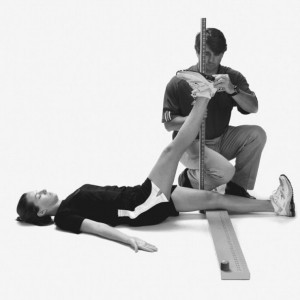Back Spasms to Squats in 20 Min
The other day a client walked past the front desk and said 'I'm done. My back is spasming and I can't train today'.
I could see the pain and disappointment in this young athlete's eyes. She was a dedicated athlete and was upset with only the physical pain but also with the thought of not being able to move without pain.
I asked her if she has a few minutes to check what was wrong. I should clarify that this wasn't an attempt to diagnose an injury. Instead I wanted to take a look at her movement patterns to see how she was moving and how this might be affecting her low back.
The first thing we looked at was her overhead squat pattern. This was a bodyweight assessment and she was ok to get into the set up position. However as she began to squat she winced and said her back spasmed. I asked her if it hurt standing, when she began to descent or at a certain depth. She said it was at a certain depth.
The next thing I had her do was get on the ground on her back to see if she could hug her knees to her chest. She could and it didn't aggravate her back. This was interesting to note because she couldn't achieve the same knee and hip flexion from a standing position.
After the knee hug test I asked her to keep both knees straight and lift one leg as high as she could. She raised one leg a few inches off the ground and repeated the same for the other leg. This was unusual as typically we look to see 80 degrees of hip flexion on this test. Right now this athlete was demonstrating 10 degrees. Maybe.
When I asked the athlete if raising the leg hurt the back she said 'no'. But she said it felt as though there was a heavy weight on her leg.
We then proceeded to use a variety of drills to activate her glutes and core. And some of the drills were an attempt to activate the glutes without allowing her to use her hamstrings. Initially when she would try some of the drills she would really struggle or stop due to her hamstrings cramping.
After about 20 minutes of assessments and corrective exercises I had her repeat the hip flexion test on her back. This is where you keep the knee straight and lift one leg. She demonstrated 80 degrees of flexion, pain-free.
Next was the big test. We had her re-attempt a squat. She was able to demonstrate full range of motion again without pain.
So what accounted for this seemingly miraculous alleviation of pain and spasming?
Well it came down to three things.
1. Posture - We had to demonstrate to this client that the hips and pelvis are like a bowl of water. When these are angled, or tilted forward, water spills out of the front of the bowl. Typically if someone is spilling water out of the front of the bowl contracts the glutes this will help restore a neutral alignment and take stress of the low back.
2. Mobility - There are certain joints in the body that were meant to move more than others. The ankles, hips and thoracic spine are three joints that require high degrees of mobility. For example if the hips or thoracic spine don't move well our body may seek out this mobility at an adjacent joint. In this case the adjacent joint in the lumbar spine.
3. Stability - Once we have full mobility we need to be able to control this motion. In this case we needed to add some frontal plane and rotational stability. A side bridge with abduction of the top leg and the bird dog are a couple of drills which help to address this.
A few other things to note:
* This was not an attempt to diagnose injury but instead an interesting way to look at deficient movement patterns. We still recommended this client seek out a manual therapist for diagnosis and treatment.
* Young athletes may respond better and bounce back sooner than older athletes.
* We can sometimes skip over a proper warm-up and cool down. We may think that hitting PBs on the gym floor means everything is working great and we have no issues. Don't wait for an issue to become an injury before giving it the attention it deserves.
Chris [fb-like]
ps...the title is sensational...realize this is a case study of n=1
pps...strength & conditioning coaches or trainer do not diagnose injury...we use exercise to facilitate optimal movement patterns
When you subscribe to the blog, we will send you an e-mail when there are new updates on the site so you wouldn't miss them.

Comments